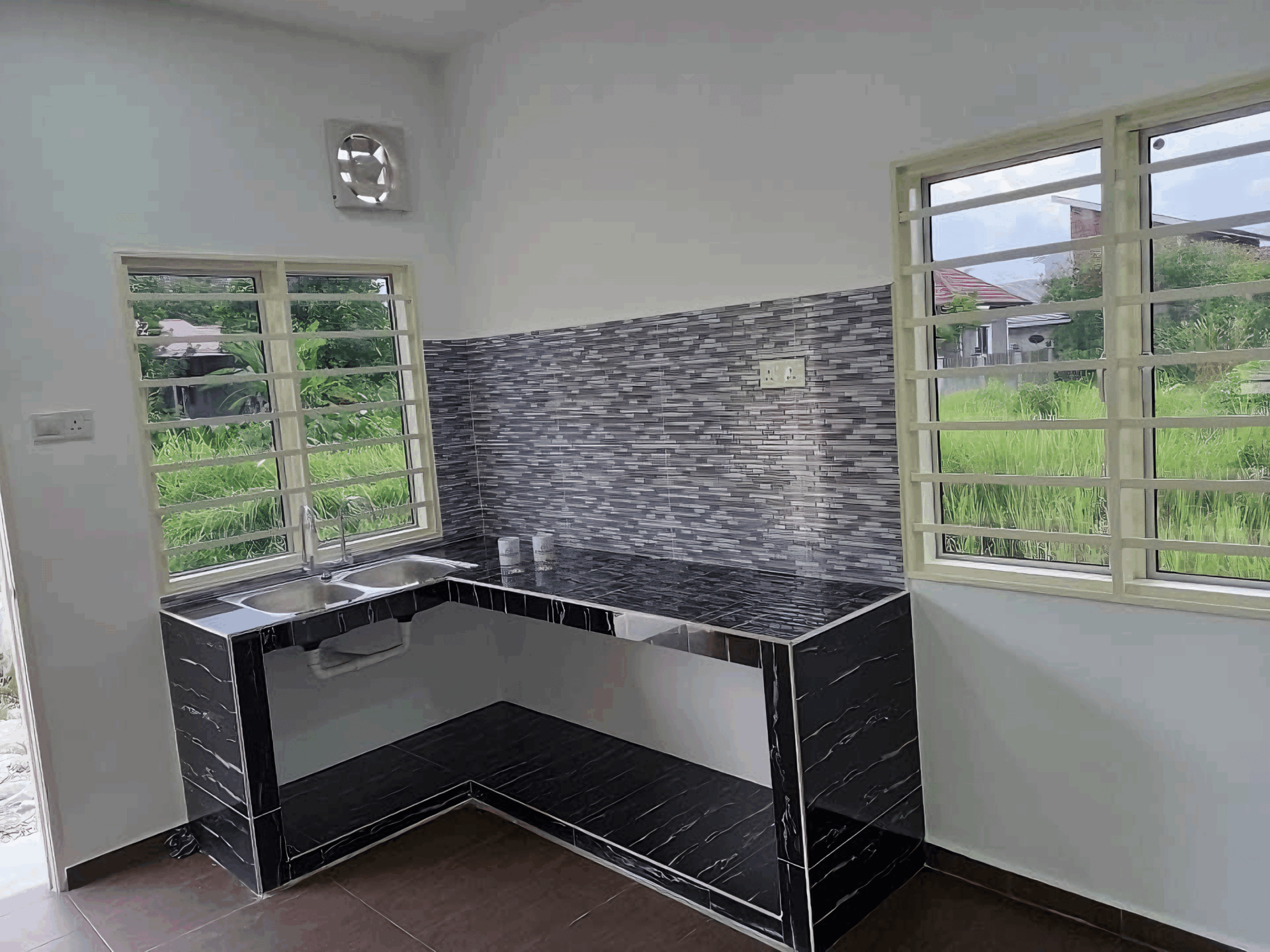Are you thinking of building your dream home in Malaysia but worried about hiring the wrong builder? You’re not alone! With so many options out there, it can feel a bit like navigating a maze. Unfortunately, not every builder has your best interests at heart, and some might have motives that are less than transparent. In this article, we’ll walk you through seven red flags to watch out for when choosing a house builder. With these tips in your toolkit, you’ll be better equipped to pick a trustworthy contractor and avoid potential headaches down the road. Let’s dive in and help you make sure your dream home doesn’t turn into a nightmare!
Identifying Unlicensed Contractors in the Building Industry
When hiring a contractor for your building project, spotting an unlicensed one can save you a ton of headaches down the line. First off, always ask for proof of licensing. Legitimate contractors should have no problem showing you their licenses. You can even check with local authorities to verify their credentials. If they avoid this question or present vague excuses, it’s a major red flag. Also, keep an eye on their work portfolio; authentic contractors proudly showcase completed projects, while dodgy ones might not have any solid evidence of their past work.
Another warning sign is the lack of written contracts. If a contractor insists on verbal agreements, be cautious. A proper contract lays out the terms of service, payment schedules, and project timelines. This not only protects you but also shows that the contractor is professional. Additionally, communication patterns can signal trouble. An unlicensed contractor may be hard to reach or slow to respond, which can lead to misunderstandings during the project that could hurt your home in the long run.
Lastly, scrutinize their pricing practices carefully. If a quote seems too good to be true, it probably is. Unlicensed contractors often undercut legitimate ones to win jobs, but this can end up costing you more if corners are cut. Trustworthy contractors should provide detailed estimates that break down costs, including materials and labor. A simple comparison can shine a light on their legitimacy. See the comparison table below for quick reference:
| Criteria | Licensed Contractor | Unlicensed Contractor |
|---|---|---|
| Proof of Licensing | Available | Hard to Obtain |
| Contract Documentation | Written Agreements | Verbal Only |
| Communication | Prompt & Clear | Delayed & Vague |
| Price Estimates | Detailed Breakdown | Too Low to Be True |

The Importance of Reviews and Testimonials
When it comes to selecting a house builder, reviews and testimonials can be your best friend. They give you insight into the experiences of previous clients, uncovering the builder’s strengths and weaknesses. A builder with a solid reputation will likely have numerous positive reviews that highlight their professionalism, quality of work, and ability to meet deadlines. If you come across a builder with little to no feedback, or worse, a high number of negative comments, it’s a big red flag.
Look for specific examples in the reviews. Are clients raving about the craftsmanship of their new homes? Or are there complaints about structural issues cropping up just months after completion? Pay attention to patterns in the feedback. You might find that while a builder is praised for their design skills, they receive criticism for poor communication. This kind of detailed information can help you make a more informed decision when it comes to your investment.
Lastly, don’t forget to check multiple platforms for reviews, such as Google, Facebook, and specialized review sites like Homily. Each platform may provide different aspects of a builder’s performance. You could even consider creating a simple table comparing different builders based on the number of reviews, overall rating, and notable comments, allowing you to visualize your options clearly:
| Builder Name | Number of Reviews | Average Rating | Notable Comments |
|---|---|---|---|
| Builder A | 120 | 4.8 | Excellent craftsmanship! |
| Builder B | 50 | 3.0 | Late on delivery. |
| Builder C | 75 | 4.2 | Great communication! |

Signs of Poor Communication and Unresponsiveness
When dealing with a house builder, one of the first red flags you might notice is their lack of responsiveness. If you find yourself waiting days for a reply to your emails or calls, that’s a big warning sign. Good builders know how important communication is and prioritize keeping their clients in the loop. If they consistently keep you hanging, it’s reasonable to question their commitment to the project.
Another sign to watch out for is vague or unclear responses. If your builder often provides ambiguous answers or dodges your questions, this can indicate that they are not being transparent about the work being done. Consider how many times you’ve asked for specifics on timelines or materials, only to receive wishy-washy answers. A trustworthy builder will gladly share details, while a dodgy one will give you the runaround.
Lastly, if your builder makes excuses for missed deadlines and avoids scheduling meetings or site visits, it might be time to reconsider your choice. Pay attention to the patterns in their behavior; consistent unavailability and excuses can signify a lack of professionalism. Here are some common excuses to listen for:
- “I’ll get back to you shortly” (but never does)
- “I’ve been really busy with other projects”
- “Technical issues with my phone/email”
When you start hearing excuses, it’s time to take a step back and reassess whether you want to keep working with them.

Evaluating Incomplete or Vague Contracts
When dealing with house builders, spotting vague or incomplete contracts can be a major red flag. Contracts should ideally be clear-cut and well-defined, leaving no room for ambiguity. If you come across a contract where vital details are missing, or the language is overly complicated, take a step back. Here are some key elements that should never be overlooked:
- Scope of Work: Ensure the contract outlines exactly what the builder is expected to do. Broad descriptions like “build a house” without specifics can lead to misunderstandings.
- Timeline: Look for a detailed schedule that states when different stages of the project will be completed. A vague timeline can mean delays and hidden costs.
- Payment Terms: Be wary of contracts that do not clearly specify the payment structure. Understand when payments are due and under what conditions before handing over any cash.
On top of that, it’s crucial to scrutinize any clauses that could favor the builder excessively. Check for terms that may put you at a disadvantage or grant the builder excessive flexibility. For example, terms like “project delays may occur at the builder’s discretion” can give them an unexpected loophole to drag their feet on completion. If you’re unsure about anything, it’s always wise to consult a legal expert before signing on the dotted line.
Ultimately, your contract serves as your safety net, so make sure it’s not frayed. Documenting every detail can not only protect your investment but also guide the contractor in delivering your dream home as envisioned. If a builder hesitates to provide a thorough contract or brushes off your requests for clarity, consider it a signal to look elsewhere.

Detecting Unprofessional Behavior on Site
When you step onto a construction site, the overall vibe can say a lot about the quality of work and professionalism you can expect. One of the first signs to look for is the attendance and attitude of the workers. Are they focused and engaged, or do they seem distracted and unmotivated? A lack of enthusiasm can be a warning flag. Additionally, inconsistent behavior among site staff is a strong indicator of underlying issues. If workers frequently change shifts and offer conflicting information, it might be time to raise your eyebrows.
Another important point to consider is communication. A reputable builder fosters open channels and ensures all parties are informed about progress. Beware of builders who dodge questions or fail to provide timely updates; this can signal disorganization and a reluctance to take accountability. Pay close attention to how they interact with you, as well as with their team. If there’s a noteworthy amount of conflict or disrespect, you might just be looking at a dodgy operation.
Lastly, keep your eyes peeled for safety practices on site. Professionals prioritize safety, and this reflects their overall workmanship. Look for clear labeling of hazards, use of personal protective equipment (PPE), and compliance with safety regulations. If it seems like safety is an afterthought, it’s not just a risk for the workers; it indicates a lack of professionalism that could compromise your project as well. Here’s a quick checklist to keep in mind:
| Signs to Look Out For | Implication |
|---|---|
| Disengaged Workers | Lack of professionalism |
| Poor Communication | Risk of misunderstandings |
| Neglected Safety Protocols | Risk to workers and your project |

Understanding the Red Flags of Financial Instability
When scouting for a reliable house builder, being aware of financial instability signs can save you heaps of trouble. One glaring indicator is a builder who frequently alters their payment schedule. If you notice them pushing for upfront payments without clear justification or changing timelines unexpectedly, take a step back. A financially shaky builder may also promise lower prices to stay competitive, which can lead to cut corners in quality and safety. Trust your instincts—unprofessional payment practices are a red flag.
Another point to keep an eye on is their responsiveness to your inquiries. A builder who is slow or evasive when providing information about their financial standing or construction processes could be hiding issues. Look for transparency; a solid builder should willingly share recent project examples, client testimonials, and even their financial portfolio if needed. If they don’t seem eager to engage, reconsider moving forward.
Lastly, check the relationships they maintain with suppliers and subcontractors. If a builder struggles to pay their vendors or has a history of disputes with them, this is a major warning sign. Strong, long-lasting relationships in the industry often indicate stability. A table summarizing these relationships can shed light on their reputation:
| Builder | Supplier Reputation | Subcontractor Feedback |
|---|---|---|
| Builder A | Good | Consistently positive |
| Builder B | Mixed | Mixed feedback |
| Builder C | Poor | Frequently negative |
As you navigate the world of house building, remember to dig deep into these financial signals. They’ll help you choose a builder who not only meets your needs but also stands on solid ground.

The Role of Certifications and Industry Affiliations
When it comes to finding a reliable house builder in Malaysia, certifications and industry affiliations act as your safety net. They’re not just pretty pieces of paper hanging on a wall; they signify that the builder adheres to specific industry standards and practices. Renowned organizations often set the benchmarks for quality and ethics, ensuring builders maintain their credibility. If a builder proudly displays certifications like ISO or recognition from local professional bodies, it’s a good hint that they take their business seriously.
Furthermore, being affiliated with industry associations spells commitment to staying updated with best practices and evolving trends. Builders who are part of groups such as the Pertubuhan Akitek Malaysia (PAM) or the Malaysia Constructors Association demonstrate a dedication to professionalism. These affiliations often require members to undertake continuous education and abide by a code of conduct. If a builder lacks such connections, it might be a reason to dig deeper into their work ethic and reputation.
Here’s a quick guide to spotting credible certifications and affiliations:
| Certification/Affiliation | Significance |
|---|---|
| ISO 9001 | Ensures quality management systems. |
| PAM Membership | Affirms relevance and quality in design and architecture. |
| Construction Industry Development Board (CIDB) | Regulates and ensures quality construction standards. |
| Green Building Index (GBI) | Sets eco-friendly construction standards. |

Recognizing the Need for Thorough Research and Due Diligence
Before diving into any home-building project, it’s vital to take a step back and consider the importance of extensive research. It’s not just about picking a name off a list or relying on a flashy website. The right builder can make your dream home a reality, while the wrong one can lead to stress, headaches, and financial loss. Spend some time digging deep into online reviews, asking previous clients about their experiences, and scouring social media for any red flags that might pop up.
Here are a few aspects to check out:
- Online Reputation: Look for reviews on platforms like Google, Facebook, and local forums.
- Past Projects: Visit completed projects or talk to homeowners about their satisfaction.
- Legal Compliance: Confirm that the builder has all necessary licenses and permits.
In addition to opinions and reviews, it’s essential to analyze any documentation presented to you. Look for transparency regarding costs, timelines, and warranties. This can be a definitive indicator of the builder’s credibility and reliability. If a builder is hesitant to provide such information or their documentation feels vague, take that as a serious warning sign.
Key documents to request include:
| Document | Purpose |
|---|---|
| Business License | Validates legality to operate in Malaysia. |
| Insurance Certificates | Covers damages and liabilities. |
| Contracts | Clarifies terms and protects your interests. |
To Conclude
And there you have it, folks! Spotting a dodgy house builder in Malaysia doesn’t have to feel like searching for a needle in a haystack. Armed with these 7 red flags, you’re now equipped to make smarter choices when it comes to your dream home. Remember, it’s not just about finding someone who can put up walls and roofs; it’s about finding a builder who cares about quality and your peace of mind.
So, whether you’re flipping through listings or chatting with potential builders, keep those flags in mind. Trust your gut, ask questions, and don’t rush the process. After all, your home sweet home deserves the best! Happy house hunting, and may you find a builder who builds not just with bricks but with integrity too! 🏡✨







